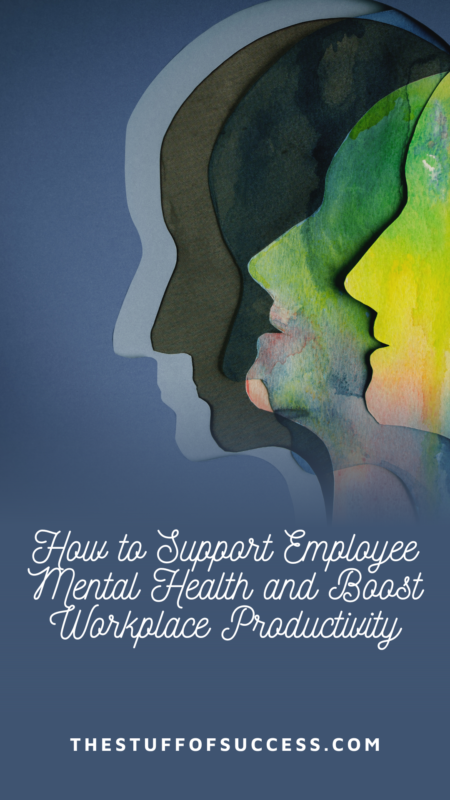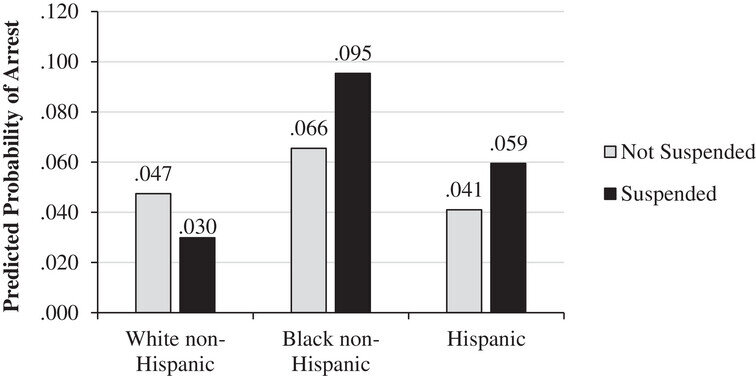The Crucial Role Of Mental Health Policy In Boosting Employee Productivity

Table of Contents
Did you know that poor mental health costs U.S. businesses an estimated $44 billion annually in lost productivity? This staggering figure highlights the urgent need for a proactive approach to employee well-being. A comprehensive Mental Health Policy is no longer a luxury but a critical component of a successful and thriving business. Increasingly, organizations are recognizing that prioritizing mental health is not just ethically responsible but also a powerful strategy for boosting employee productivity and overall business success. This article will argue that a strong Mental Health Policy is essential for achieving these goals.
H2: The Link Between Mental Health and Productivity
H3: Reduced Absenteeism and Presenteeism:
Mental health issues significantly impact workplace attendance and performance. Absenteeism, or days off work due to illness, is dramatically increased by conditions like depression and anxiety. However, the impact extends beyond simply staying home. Presenteeism, where employees are physically present but underperforming due to mental health struggles, is equally detrimental. The cost of presenteeism is often underestimated but can be even more significant than absenteeism, resulting in reduced output, increased errors, and lower quality of work. Statistics from the World Health Organization indicate that depression and anxiety disorders alone account for a significant portion of lost productivity globally.
- Examples of mental health conditions affecting productivity:
- Anxiety disorders
- Depression
- Burnout
- Post-traumatic stress disorder (PTSD)
- Substance abuse
H3: Improved Employee Engagement and Morale:
Supportive Mental Health Policies are directly correlated with increased employee engagement and morale. When employees feel valued and supported, they are more likely to be engaged in their work, leading to higher productivity and job satisfaction. A positive work environment, where open communication about mental health is encouraged, fosters a sense of belonging and trust, boosting overall morale.
- Examples of initiatives that improve morale:
- Employee Assistance Programs (EAPs) offering confidential counseling and support.
- Flexible work arrangements, allowing employees to better manage their workload and personal life.
- Mental health awareness training for all employees and managers.
- Wellness programs that promote physical and mental well-being.
H3: Enhanced Creativity and Innovation:
A healthy mental state is crucial for optimal cognitive function, including creativity and innovation. When employees feel mentally well, they are better equipped to think critically, solve problems creatively, and contribute innovative ideas. Mental Health Policies that prioritize well-being indirectly contribute to a culture that values and supports creative thinking and risk-taking.
- Examples of how a supportive environment fosters creative thinking and problem-solving:
- Encouraging breaks and mindfulness practices.
- Providing opportunities for professional development and skill enhancement.
- Creating a psychologically safe space for employees to share ideas without fear of judgment.
H2: Key Components of an Effective Mental Health Policy
H3: Accessible Mental Health Resources:
An effective Mental Health Policy must provide employees with easy access to a range of mental health services. This includes confidential and stigma-free access to:
- Types of resources to offer:
- Employee Assistance Programs (EAPs)
- Telehealth options for convenient access to therapists and counselors.
- Mental health days, allowing employees time off to address their mental health needs.
- Stress management programs and workshops.
- Referral services to qualified mental health professionals.
H3: Promoting a Culture of Open Communication and Support:
Creating a workplace where employees feel comfortable discussing mental health is paramount. This requires a shift in organizational culture, starting with leadership actively promoting open communication and demonstrating empathy.
- Strategies for open communication:
- Training for managers on how to recognize and support employees struggling with mental health issues.
- Anonymous feedback mechanisms allowing employees to express their concerns without fear of retribution.
- Regular communication highlighting the importance of mental well-being.
H3: Flexible Work Arrangements and Reasonable Accommodations:
Offering flexible work arrangements, such as remote work options, flexible hours, or compressed workweeks, can significantly improve employees' work-life balance and help them manage their mental health more effectively. Reasonable accommodations, such as adjusted workloads or modified workspaces, should be provided for employees with mental health conditions.
- Examples of flexible arrangements:
- Remote work options
- Flexible hours
- Compressed workweeks
- Job sharing
H2: Measuring the ROI of Mental Health Policies
H3: Quantifiable Benefits:
The return on investment (ROI) of a strong Mental Health Policy can be measured through several key performance indicators (KPIs).
- Key performance indicators (KPIs) to monitor:
- Reduced absenteeism rates
- Improved employee engagement scores
- Increased productivity levels
- Reduced employee turnover
- Improved employee satisfaction
H3: Long-Term Impact on Employee Retention:
Investing in employees' mental health leads to improved retention rates and reduces costly recruitment processes. A positive company culture built around mental well-being attracts and retains top talent. This positive impact extends to company reputation and brand image.
- Methods for measuring employee retention and satisfaction:
- Employee surveys
- Exit interviews
- Tracking turnover rates
3. Conclusion:
In conclusion, a robust Mental Health Policy is not merely a socially responsible initiative but a strategic investment that directly impacts employee productivity and overall business success. By implementing the key components discussed above—accessible resources, open communication, flexible work arrangements, and measurable outcomes—organizations can create a supportive environment that fosters employee well-being, boosts productivity, and enhances the bottom line. Invest in your employees' mental health; develop a comprehensive Mental Health Policy; boost productivity through effective Mental Health Strategies. For further reading on creating effective workplace mental health programs, consult resources from the Mental Health America or the Substance Abuse and Mental Health Services Administration (SAMHSA). A strong Mental Health Policy is the cornerstone of a thriving and successful organization.

Featured Posts
-
 The Tory Partys Gamble A Boris Johnson Comeback
May 03, 2025
The Tory Partys Gamble A Boris Johnson Comeback
May 03, 2025 -
 The Harmful Effects Of School Suspensions A Critical Analysis
May 03, 2025
The Harmful Effects Of School Suspensions A Critical Analysis
May 03, 2025 -
 Leaked 2008 Disney Game Now Available On Ps Plus Premium
May 03, 2025
Leaked 2008 Disney Game Now Available On Ps Plus Premium
May 03, 2025 -
 Chinese Ships Near Sydney Increased Presence Prompts Australian Caution
May 03, 2025
Chinese Ships Near Sydney Increased Presence Prompts Australian Caution
May 03, 2025 -
 1 Mayis Emek Ve Dayanisma Guenuende Yasananlar Ve Anlami
May 03, 2025
1 Mayis Emek Ve Dayanisma Guenuende Yasananlar Ve Anlami
May 03, 2025
